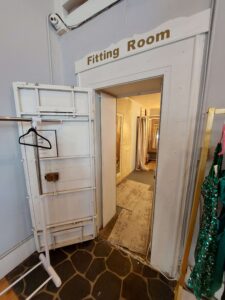How often do you get off the main highways and take smaller country backroads? If you’re like me, not often enough. All those years driving between Tennessee and Texas—and making the trip in one day—meant I never had the time to deviate off my route, no matter how much I wanted to explore the smaller roads and towns along the way.
The Decision
A few weeks ago, when Mom and I began our trip home to Texas, the hotel where we planned to spend the night was only five hours (by Interstate) away. The relatively short distance allowed us the freedom to leave Interstate 65 for a smaller Alabama state highway that, more or less, paralleled the Interstate.
The Town
To reach AL 31, our chosen route, we exited on AL 36, which took us to the delightful town of Hartselle. When the South and North Alabama Railroad was being built, the center of Hartselle was located about a mile north of where it sits today. But that location wasn’t conducive for a train stop, and the railroad asked the town to move. Back then, the railroad was a town’s livelihood. So, Hartselle moved. And, thanks to the railroad, it became an important shipping point for northern Alabama. It was a hub for fruit, berry, and timber production, though cotton remained the primary cash crop.
Hartselle grew, but not without suffering a few setbacks along the way. Fire ravaged the town twice in the early twentieth century. In 1901, a fire destroyed all commercial buildings on the east side of the railroad. Fifteen years later, in 1916, a fire wiped out twenty-one commercial buildings on the west side of the railroad. The east side structures were never rebuilt, but a 1916-1917 rebuilding campaign replaced the ones on the west side—this time using brick rather than wood.
Did You Know…
- Hartsville was founded in 1870 and incorporated in 1875. Though named after early pioneer George Hartsell (no “e”), an “e” was added to the name when the town’s post office was established in 1873.
- A converted boxcar acted as Hartselle’s first depot.
- Cotton’s heyday in Hartselle lasted from 1870-1960.
- Hartselle’s 1900 population of only 670 grew to over 15,000 by 2020, and it’s now the second largest town in Morgan County.
- Hartselle’s commercial business district is on the National Register of Historic Places.
The Bank Robbery
Almost 100 years ago, ten to fifteen men pulled off a daring nighttime robbery at the Bank of Hartselle. Sometime after midnight on Monday morning, March 15, 1926, five men appeared in town, asking where they could buy gas. The man they asked led them to the night policeman. That’s when the five visitors produced guns and took the two townsmen hostage, tying them up in the bank’s back room.
The gang at the bank proceeded to unload tools, guns, and explosives from their cars. Other gang members grabbed the depot’s station agent and a waiting passenger. They were taken to the bank as captives, too. In the end, seven towns’ people were held as hostages.
The robbers first attempted to enter the bank’s vault by busting a hole through the wall. They made it through the double brick barrier, only to be stopped by the vault’s steel lining. That’s when the gang moved on to Plan B—blow open the vault door. They accomplished that mission, but it took as many as eight explosive charges to do so, which both wrecked the bank and woke local citizens
The bandits fired warning shots to keep the growing crowd back. Lots of shots were fired, but only one person, a dentist, was hit. (He was rushing out to help put out a fire—or so he thought.) According to the prisoners, the bandits treated them with unusual courtesy. They didn’t want to shoot anyone. They were just “hard up” and needed the money. And money they got. They slipped out of town with around $15,000 in cash, silver, and gold.
Did You Know…
- The blast embedded the vault’s lock into the bank’s ceiling some fifty feet away.
- The 1926 take of nearly $15,000 would be worth around $250,000 today.
An Unsolved Crime
The bank robbers took more than three hours to break into the vault and escape with their loot. And because they’d cut the communication lines first, no one in town could call for help. At 4:30 that morning, a train from Cincinnati arrived at the station, stopped by a “red block” signal. But no one was at the station. The conductor stepped off the train to investigate, and a group of frightened men huddled nearby told him what had happened. He instructed them to wake the town and form a posse to go after the thieves.
Then he got back on the train and continued south half a mile to an emergency telephone (the robbers hadn’t known about) and contacted the Birmingham dispatcher. With no guns onboard, the passengers urged the conductor to continue to Birmingham rather than return to Hartselle.
Authorities in Birmingham and Cullman were notified. One of the getaway cars was even discovered in Birmingham. It contained checks and empty money bags, but provided no other clues since it, too, was stolen. Despite local, state, and federal authorities’ best efforts, no one was ever identified or arrested, and the crime remains on the books as unsolved.
Did You Know…
- In 1926, Hartselle’s population was a little over 2,000.
- The bank’s loss was fully insured, and it opened for business as normal—or as normal as possible—the day after the robbery with the help of other banks in town.
- Hartselle reenacted the robbery in 2019.
The Rest of the Story
Our first adventure that day began in Hartselle. After cruising around the downtown area, we parked near the railroad and set out to explore the Historic District. Mom and I walked up and down Main Street, popping in and out of the various quaint shops and restaurants, before ending our visit—or so we thought—at the refurbished Train Depot, now the Chamber of Commerce.
There we enjoyed a visit with Chris, Hartselle’s Marketing & Events Coordinator. He graciously answered our—okay, my—many questions with a smile. He shared extra bits of the town’s history, then surprised us with the information that we could see the old bank vault, if we wanted.
That was something we couldn’t pass up. Though we’d read the historical markers about the Great Hartselle Bank Robbery and listened to Chris tell the story, it was still just a story. Until the moment we stood in the old bank building—now a ladies clothing store—and gazed at the busted brick wall . . .

Bank Vault’s Double Brick Wall
. . . and the vault.

The Vault a.k.a. Fitting Rooms

The Hartselle Bank a.k.a. Forever Kate’s
Even with the clothes and other paraphernalia lying about, it was easy to imagine it as a bank, and how it might have looked that night nearly one hundred years ago.
So, if you ever find yourself in northern Alabama, make a trip to Hartselle. It’s well worth the visit. The people are friendly, the food choices are numerous, and stepping into a bygone era is as easy as stepping into a store.

